#André Delambre
Text

the 80s really loved turning delightful little 1950s horror movies, into the most nauseating and horrific remakes, huh?
#the fly#the fly 1986#the fly 1958#seth brundle#the thing 1982#practical effects#scifi#scifi horror#the blob#david cronenberg#body horror#andré delambre#vincent price
295 notes
·
View notes
Text

What if Gregor Samsa and André Delambre kissed.
#The Metamorphosis#Kafka's Metamorphosis#Gregor Samsa#Langelaan's The Fly#The Fly#George Langelaan#André Delambre#Animals#Invertebrates#Arthropods#Insects#Beetles#Scarab#Flies#Transformation#Character Design#European bug guys
34 notes
·
View notes
Text
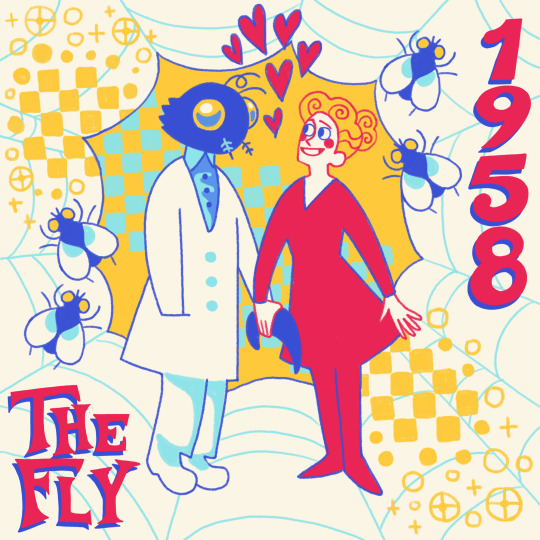
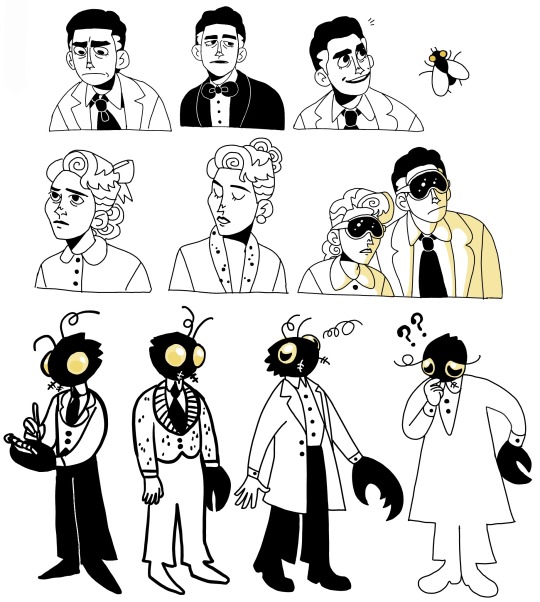


My costume this Halloween was The Fly (from the 1958 movie), so here's some of the many doodles of him I drew a few years back. The 80s remake has great body horror, but I love the 50s version for its fun mutation design, pastel color schemes, Vincent Price's presence, and especially the relationship between the two leads. He may have a fly head, but I truly believe they could have made it work
#the fly#the fly 1958#kurt neumann#50s horror#my art#I know his name is André but I'm assuming saying 'oh my costume is André Delambre' isn't super explanatory
453 notes
·
View notes
Text
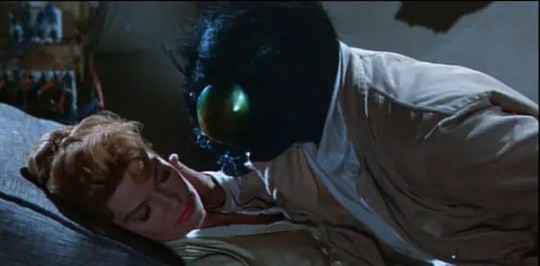
Patricia Owens and David (Al) Hedison as Hélène and André Delambre
The Fly (1958)
4 notes
·
View notes
Text
THE FLY (1958) – Episode 133 – Decades Of Horror: The Classic Era
“Help me! Please, help meeeeeee! No! Go away! No! Please! Help me! Please, go away! Go away! No! No! No! No!” …said the fly to the spider …and his brother. Join this episode’s Grue-Crew – Chad Hunt, Whitney Collazo, Daphne Monary-Ernsdorff, and Jeff Mohr – as they discuss a movie that contains some of the most shocking scenes of the 1950s and which became a milepost in Vincent Price’s career in horror films, The Fly(1958).
Decades of Horror: The Classic Era
Episode 133 – The Fly (1958)
Join the Crew on the Gruesome Magazine YouTube channel!
Subscribe today! And click the alert to get notified of new content!
https://youtube.com/gruesomemagazine
ANNOUNCEMENT
Decades of Horror The Classic Era is partnering with THE CLASSIC SCI-FI MOVIE CHANNEL, THE CLASSIC HORROR MOVIE CHANNEL, and WICKED HORROR TV CHANNEL
Which all now include video episodes of The Classic Era!
Available on Roku, AppleTV, Amazon FireTV, AndroidTV, Online Website.
Across All OTT platforms, as well as mobile, tablet, and desktop.
https://classicscifichannel.com/; https://classichorrorchannel.com/; https://wickedhorrortv.com/
A scientist has a horrific accident when he tries to use his newly invented teleportation device.
IMDb
Director: Kurt Neumann
Writers: James Clavell (screenplay); George Langelaan (based on a story by)
Cinematographer: Karl Struss
Special makeup effects: Ben Nye
Selected Cast:
David Hedison (credited as Al Hedison) as André Delambre
Patricia Owens as Hélène Delambre
Vincent Price as François Delambre
Herbert Marshall as Inspector Charas
Kathleen Freeman as Emma
Betty Lou Gerson as Nurse Anderson
Charles Herbert as Philippe Delambre
Eugene Borden as Dr. Éjoute
Torben Meyer as Gaston
The first of five “Fly” movies, The Fly is Jeff’s pick for this episode. It’s one of those movies from his childhood that indelibly printed its horrific scenes in his memory. Watching now, he is still impressed with the movie, especially in the way the story is told and with the Ben Nye-created makeup effects.
Chad agrees that The Fly is a fantastic horror film. It feels more real to him than a lot of science fiction-horror movies of the 50s adding that it is the characters that help make it so. The reveal of Andre’s (David Hedison) fly head feels almost like the face reveal in The Phantom of the Opera (1925). The Fly was nightmare fuel for Whitney when she first saw it as a child on Halloween night, complete with a candy bag that included fake spiders. Daphne fell in love with The Fly during the first few minutes when blood drips down the side of an hydraulic press and the night watchman’s scream morphs into a telephone ringing in Francois’s (Vincent Price) office.
It’s probably not surprising that the Classic Era Grue Crew thinks The Fly is a true classic of the horror genre. If you’re ready to refresh your memory, as of this writing, The Fly can be streamed from HBO max as well as several PPV sources. It is also available on physical media as a 20th Century Fox Blu-ray and as one of five Blu-ray discs included in Scream Factory’s The Fly Collection. Also included in The Fly Collection are Return of the Fly (1959), Curse of the Fly (1965), The Fly (1986), and The Fly II (1989).
Gruesome Magazine’s Decades of Horror: The Classic Era records a new episode every two weeks. Up next in their very flexible schedule is one chosen by next episode’s guest host, Steven Turek: Horrors of the Black Museum (1959) starring Michael Gough.
Please let them know how they’re doing! They want to hear from you – the coolest, grooviest fans: leave them a message or leave a comment on the site or email the Decades of Horror: The Classic Era podcast hosts at [email protected]
To each of you from each of us, “Thank you so much for listening!”
Check out this episode!
0 notes
Text
Unidades de medida: conheça as principais
Unidades de medida: conheça as principais
https://ift.tt/ExI9hS3
É difícil encontrar alguém que tenha feito alguma prova ou vestibular e não tenha precisado estudar as principais unidades de medida. No momento da prova, pode parecer que você nunca vai usar esse conhecimento para nada.
Mas essa impressão muda quando você vai a uma loja de eletrodomésticos em busca de uma TV 32 polegadas. Por se tratar de uma unidade de medida não popular no Brasil, muitos consumidores acabam comprando esse tipo de aparelho sem ter real dimensão do tamanho que ele vai ocupar na sua sala de estar. Confira as principais unidades de medida e não se sinta perdido ao comprar um novo eletrodoméstico!
Como surgiram as unidades de medida?
Desde o início das primeiras civilizações, os humanos apresentaram a necessidade de quantificar e medir a fim de se organizar melhor ao lidar com o mundo e manipular distâncias, pesos, alturas, profundidades, etc.
Vale lembrar que cada civilização costuma ter o seu próprio sistema de medidas, já que elas estão profundamente relacionadas às necessidades e ao cotidiano de cada sociedade.
Com o desenvolvimento do sistema capitalista, essa diversidade de unidades de medida se tornou um problema, já que o comércio precisava de uniformidade para facilitar as transações e trocas. Foi justamente o surgimento dos Estados Nacionais na Europa que realizou essa padronização de pesos e medidas.
Polegada
Quem já foi a uma loja de eletrodomésticos comprar uma TV de tela plana, por exemplo, já ficou em dúvida ao ver a dimensão das telas informada em polegadas. Essa unidade de medida é bastante popular nos Estados Unidos e não no Brasil, o que demanda uma atenção adicional na hora de escolher um aparelho e acertar no tamanho adequado.
Essa unidade corresponde a 1/12 de um pé (ou 2,54 centímetros). No Brasil, o nome polegada se refere à média da extremidade da mão. Em outras línguas latinas, como o francês, o italiano e o catalão, o nome dessa unidade de medida também faz referência a essa parte do corpo humano.
Metro
Essa é uma das unidades de medida mais utilizadas no Brasil e seu nome é originário do grego e significa “medida”. O metro foi inicialmente definido como sendo a décima milionésima parte da distância entre o Polo Norte e o Equador Terrestre. E foi criado por dois astrônomos na França: Jean-Baptiste-Joseph Delambre e Pierre-François-André Méchain.
Contudo, o desenvolvimento científico demandou uma nova definição para essa unidade de medida. Hoje, o metro se trata do comprimento do trajeto que a luz percorre no vácuo em um intervalo de tempo de 1/299 792 458 de segundo.
Arroba e quilograma
A arroba é a unidade de medida cujo nome é de origem árabe e significa “a quarta parte”. Tal medida é uma unidade de massa e equivale a um quarto de 1 quintal – medida bastante popular na Península Ibérica (Portugal e Espanha), além do Brasil. Hoje, essa unidade de medida é mais comumente usada no Brasil na hora de pesar animais como gado e porcos e equivale a 15 kg.
A unidade de massa mais comum no Brasil é o quilograma – utilizada na hora de comprar alimentos ou conferir o peso corporal das pessoas em consultas médicas, por exemplo. O quilograma é a unidade básica do Sistema Internacional e equivale ao peso de um litro de água em sua densidade máxima.
Segundo
Para medir a passagem do tempo, a unidade de medida mais usada é o segundo (e seus desdobramentos, como a hora). Essa necessidade de medição começou com os egípcios há dois milênios, sendo utilizado o movimento da lua e do sol.
Somente séculos depois, com o desenvolvimento científico, que a humanidade constatou que a rotação terrestre era insuficiente para medir a passagem do tempo. Em 1900, a comunidade científica definiu o segundo como sendo 1/31.556.925.9747 do tempo em que a Terra necessita para completar um giro em torno do Sol.
Post Original Blog-Se
via Dicas Tudos & Todos https://ift.tt/9RsgfLM
August 24, 2022 at 03:12PM
0 notes
Photo
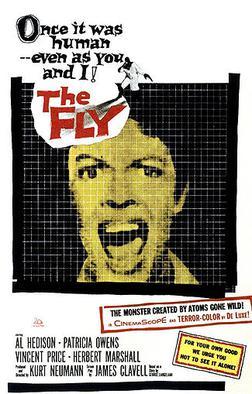
The Fly (1958)
IF SHE LOOKED UPON THE HORROR HER HUSBAND HAD BECOME… SHE WOULD SCREAM FOR THE REST OF HER LIFE!
Industrialist François Delambre is called late at night by his sister-in-law, Helene Delambre, who tells him that she has just killed her husband, André. Reluctant at first, she eventually explains to the police that André invented a matter transportation apparatus and, while experimenting on himself, a fly entered the chamber during the matter transference.
0 notes
Text
5 Underrated actors
Brock Peters
Most Famous role: Tom Robinson in To Kill a Mockingbird
Favorite Roles: Darth Vader in the Star Wars radio dramas and Admiral Cartwright in Star Trek IV The Voyage Home and Star Trek VI The Undiscovered Country
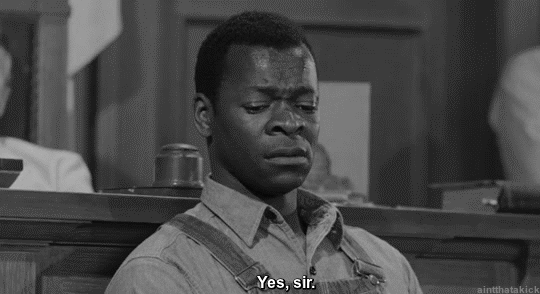
John Colicos
Most Famous roles: Kor in Star Trek and Star Trek Deep Space Nine and Apocalypse in X Men
Favorite roles : Baltar in Battlestar Galactica (1978) and Captain DeWitt in the Changeling
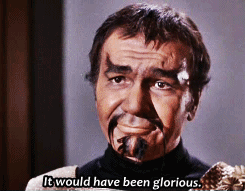
William Atherton
Most famous Roles : Walter Peck in Ghostbusters and Richard Thornburg in Die Hard and Die Hard 2
My Favorite role : Dr Destiney in Justice League

David Hedison
Most Famous role : André Delambre in the Fly
Favorite Role : Felix Leiter in Live and Let Die and Licence to Kill
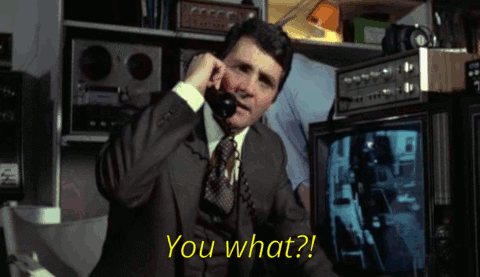
Barry Dennen
Most Famous Role : Pontious Pilate in Jesus Christ Superstar
Favorite role : The Chamberlin in the Dark Chrystal
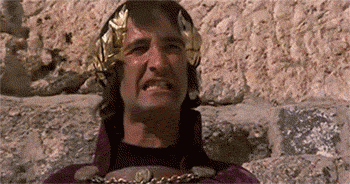
@marquisedemasque @amalthea9 @metropolitan-mutant-of-ark @ariel-seagull-wings
12 notes
·
View notes
Text
Desafío del proyecto: exploración inicial e hipótesis.
INTRODUCCIÓN: Con el trabajo de la actividad el desafío del proyecto, logramos identificar como tema central las medidas de longitud y como equipo nos surgió lo siguientes interrogantes: ¿cómo hacían para medir antes? y ¿con qué instrumentos median en el pasado? dichos interrogantes nos llegó a formular la siguiente pregunta de indagación ¿cuáles son los orígenes de la medición de longitudes, como median en esa época y ventajas y desventajas de esa forma de medir?
En nuestra indagación sobre la problemática que nos plantea encontramos que cada comunidad tenía diferentes métodos de medición de longitudes. Por lo cual todo comenzó porque el humano tenía la necesidad de medir cosas.
Por lo cual cada comunidad comenzó a tomar estas con el cuerpo, como el brazo, la pierna, el brazo, pies, manos, etc. Estas medidas no se podían comprobar, ya que, como todos son diferentes, estas medidas también lo eran.



En la antigüedad se crearon medidas patrones y todos las civilizaciones tenían otras formas de medición, claro que las dudas se crearon y querían saber las distancias entre las civilizaciones, desde ahí, poco a poco se empezaron a crear instrumento adecuados. La gran ventaja era que tenían su forma de medir, pero como se había dicho antes, los humanos, al tener todos diferentes tamaños, estas medidas eran diferentes.
Los franceses Jean Baptiste, Joseph Delambre y Pierre Méchain, quienes entre 1792 y 1798, mediante unos estudios y cálculos establecieron una nueva unidad de medida, el metro. Luis XVI encargó a los topógrafos Pierre François André Méchain y Jean Baptiste Joseph Delambre llevar a cabo la medición del meridiano. La técnica a utilizar sería la de la triangulación geodésica. Se traza una cadena de triángulos, los vértices de los cuales serían montañas situadas a lo largo del meridiano y se calcularía sus dimensiones a partir de la medición de dos bases, cuidadosamente medidas sobre la medida del patrón más perfecto que existía en Francia: la toesa.
Pierre Méchain
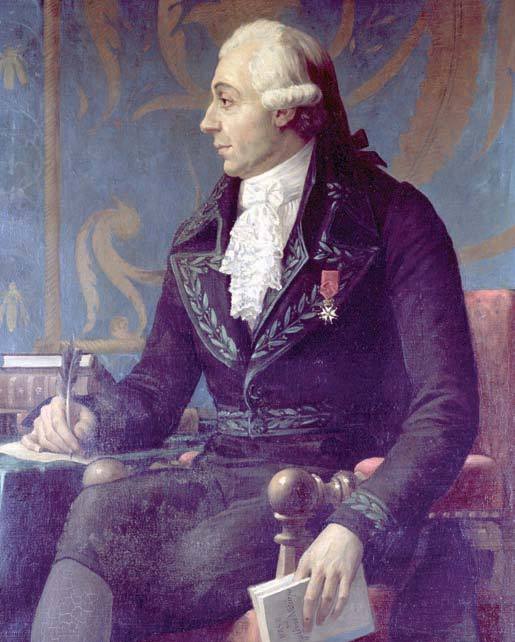
Jean Baptiste
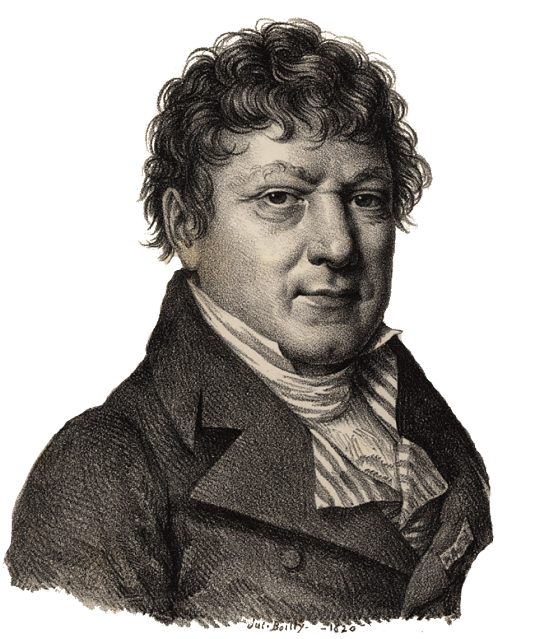
Desde ahí hasta la actualidad sacaron instrumentos de longitud como: metro de carpintero, cinta de modista, regla de madera, distanciómetro, conocido como medidor láser. Los egipcios, usaban del codo hasta el dedo del medio (corazón). Los romanos usaban del talón al dedo pulgar. En Inglaterra el rey Enrique primero, en su reino, estableció, de la punta de su nariz, hasta dedo pulgar, con el brazo extendido, este último es la famosa ‘yarda’. Las personas más antiguas, median con rocas, palos, etc.
A continuación este video nos explicará el sistema de medidas, la historia y ejemplos
youtube
Aprendizajes
-las ventajas y desventajas de las medidas en estos tiempos.
-como se empleaban estas formas de medir en cada comunidad.
-porque se creo y necesito la medición.
-la historia de la medición.
-la evolución de la medición de longitudes.
-quienes fueron mandados para investigar más de la medición y como emplear correctamente los implementos.
Bibliografía
http://www3.gobiernodecanarias.org/medusa/ecoblog/jgomrode/files/2016/10/HISTORIA-DE-LAS-MEDIDAS-DE-LONGITUD.pdf
https://redhistoria.com/historia-de-las-medidas-de-longitud-de-la-antiguedad/
https://historiaybiografias.com/numero_medida_2/
http://mimosa.pntic.mec.es/mlucas2/softEduca/umedida/la_medicion_en_la_historia.html
https://www.ecured.cu/Historia_de_la_medici%C3%B3n
1 note
·
View note
Text
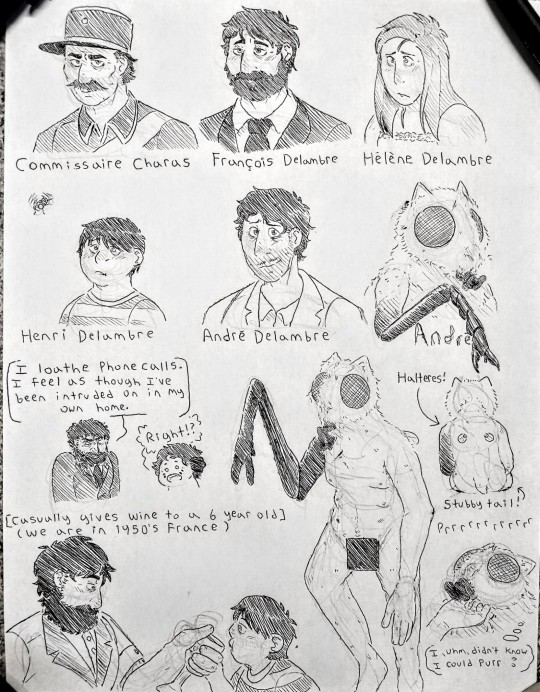
Read The Fly by George Langelaan a few days ago and I think everything would've been alright if André had just gotten some chin scritches.
#The Fly 1957#The Fly George Langelaan#George Langelaan#Body Horror#Invertebrates#Arthropods#Insects#Flies#Commissaire Charas#François Delambre#Hélène Delambre#Henri Delambre#André Delambre#Transformation horror#short story#nudity#This type of story is my fucking Brand#The way André communicates after his transformation and how things are described and play out#Is So fucking good
14 notes
·
View notes
Photo
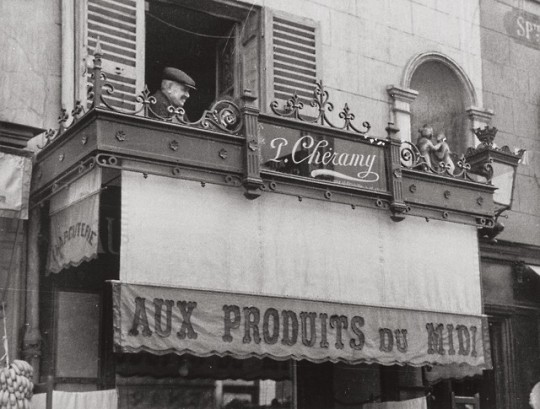
André Kertész (1894-1985) 11, Rue Delambre, Paris, - source Heritage Auctions.
14 notes
·
View notes
Text
The Fly
Industrialist François Delambre is called late at night by his sister-in-law, Helene Delambre, who tells him that she has just killed her husband, André. Reluctant at first, she eventually explains to the police that André invented a matter transportation apparatus and, while experimenting on himself, a fly entered the chamber during the matter transference.
View On WordPress
0 notes
Text
David Hedison, actor in <em>Another World</em> and two James Bond movies, dies at 92
New Post has been published on https://newsprofixpro.com/tekamedia/2019/07/23/david-hedison-actor-in-another-world-and-two-james-bond-movies-dies-at-92/
David Hedison, actor in Another World and two James Bond movies, dies at 92

Actor David Hedison has died at the age of 92, according to PEOPLE.
Hedison starred as scientist André Delambre in the classic 1958 horror film The Fly and later appeared in two James Bond movies, playing CIA operative Felix Leiter in 1973’s To Live and Let …
Read More

Buy Now



Price: $4.80
Item specifics
Condition:
New: A brand-new, unused, unopened, undamaged item in its original packaging (where packaging is
Brand:
Unbranded
UPC:
Does not apply
MPN:
NOT
EAN:
Does not apply

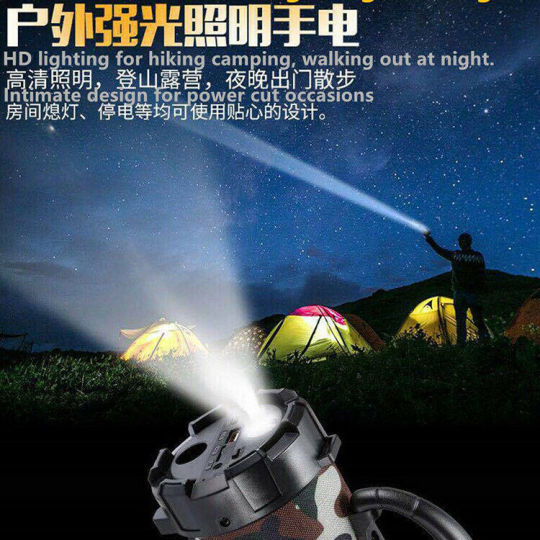







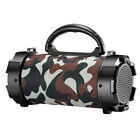
$4.80
End Date: Tuesday Aug-13-2019 1:20:02 PDT
Buy It Now for only: $4.80
Buy It Now | Add to watch list

Buy Now



Price: $13.89
Item specifics
Condition:
New: A brand-new, unused, unopened, undamaged item in its original packaging (where packaging is
Model:
100-200 Solar LED
Brand:
Unbranded/Generic
Power Source: Solar Features: 12m/22m,Waterproof,100/200 LED Light MPN:
Does not apply


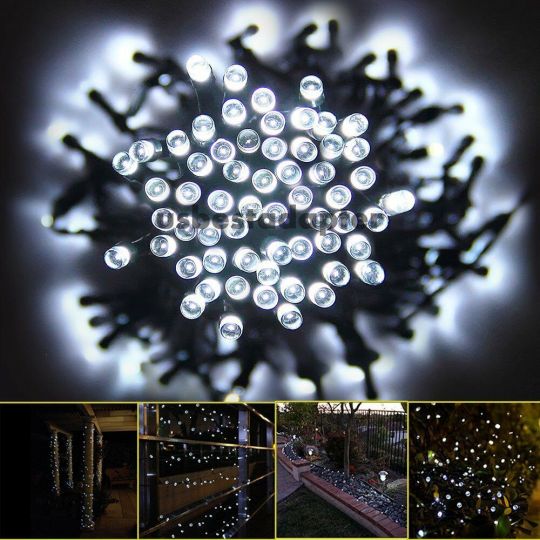
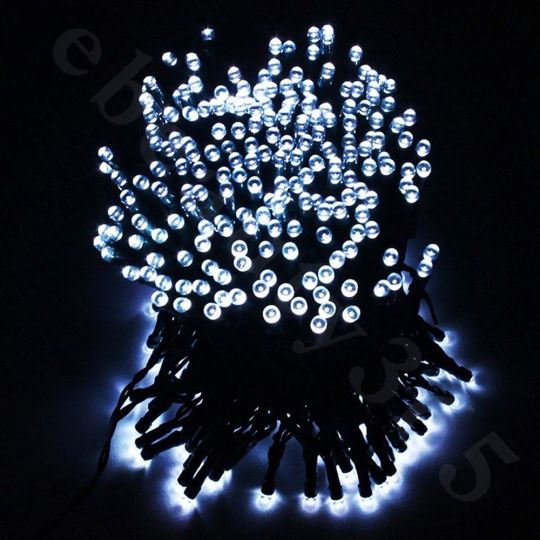
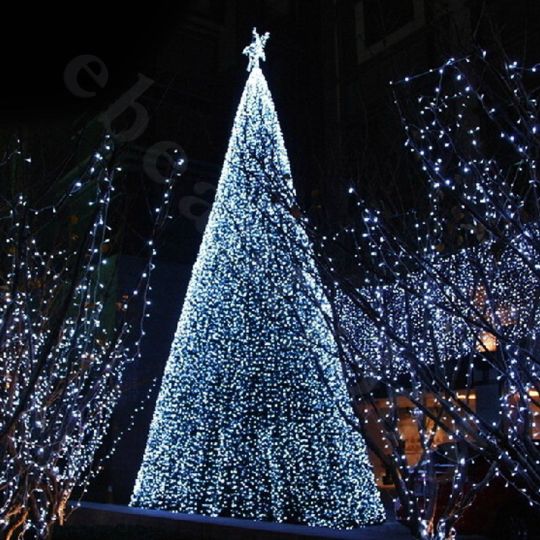
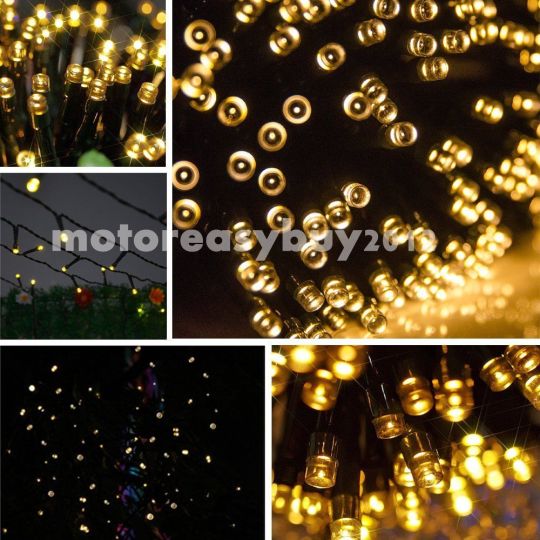
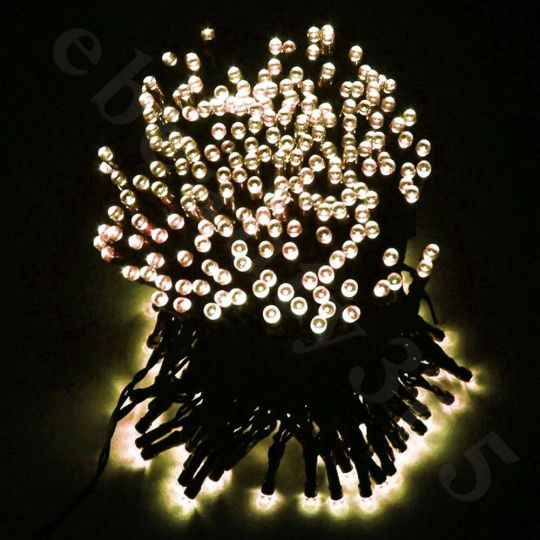


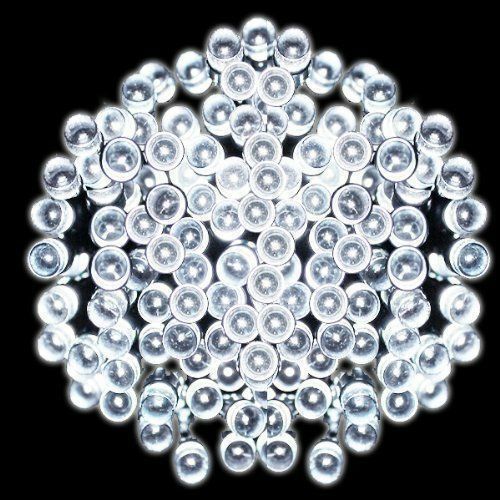


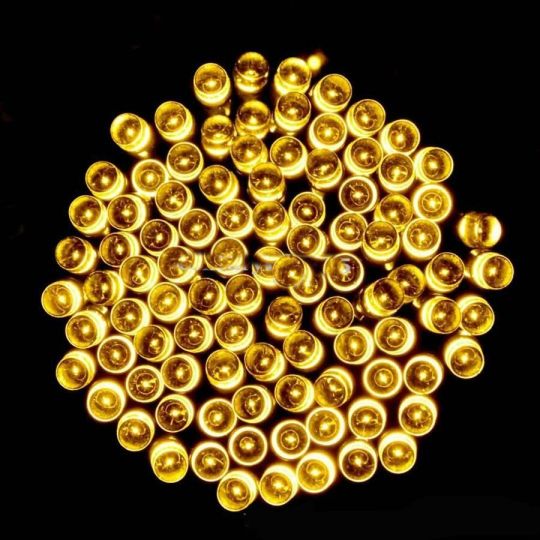







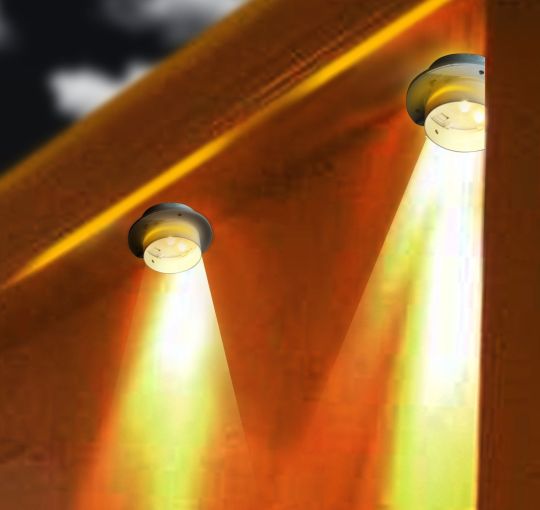
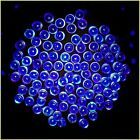
$13.89
End Date: Wednesday Aug-21-2019 20:14:23 PDT
Buy It Now for only: $13.89
Buy It Now | Add to watch list
0 notes
Text
How You Can Experience 1920s Paris Today
If there is one era I’d want to visit more than any other, it’s Paris in the 1920s. I’m in love with that decade. The literature, jazz, optimism, style, and atmosphere — I love it all. Midnight in Paris is my favorite Paris movie, and I often wish I could make that real life.
However, unless you have a time machine, you can’t really visit 1920s Paris. What made les Années folles special can never be relived — the spirit, psyche, people, and music have long since faded away. But, as we have seen with the rise of Gatsby-themed parties and Prohibition-style bars, you can pretend! And that’s what I did on a recent visit to Paris, where there are still enough spots that recreate the era’s vibe to fill a visit.
Things to See and Do
20 rue Jacob – Back in the ’20s, a lot of American expats hosted salons that would bring together artists and writers to discuss and debate specific topics. One of the most famous was led by writer Natalie Clifford Barney. Although the building she lived in has been rebuilt since her time, during the day, you can often peer into the courtyard and garden where she held her salons.
The Luxembourg Garden (Jardin du Luxembourg; 6th arrondissement) – This is one of my all-time favorite places to visit when I’m in Paris. These beautiful and gigantic gardens, which surround the Luxembourg Palace (now home to the National Assembly), are also full of walking paths, chairs to relax in, ponds and fountains, statues, and finely manicured lawns that can’t help but inspire and soothe you. On a warm day, the gardens are bursting with people. In his day, Ernest Hemingway was also a fan, and it is said he wrote a lot during his strolls around the gardens.
Shakespeare & Co. (37 Rue de La Bûcherie, http://ift.tt/j7zTtn) – Located across from Notre Dame, Shakespeare & Co. is one of the most iconic bookshops in the world. The original store opened in 1919 and served as a popular haunt for writers such as Ezra Pound, Ernest Hemingway, James Joyce, and others who fancied themselves writers (Hemingway’s A Moveable Feast has a chapter about his visit). The original location closed during WWII. The current store and location dates to 1951. It still captures the spirit of the writer class and does a lot to support writers (it has 13 beds writers can sleep in for free!), hosting readings and events throughout the year. I love wandering through its stacks and picking out unknown titles.
Montmartre – The Left Bank was the main hangout of artists and writers, but when they crossed the Seine, they went to Montmartre, where the cheap shops, cafés, and restaurants served as a backdrop to their discussions and work. They painted in the squares, debated in the streets, and wandered the tiny cobblestone streets in solitary thought. Today, thanks to the cheap housing, the area is still home to artists and painters (though it is far more touristy)!
27 rue de Fleurus – Another salon was hosted by the famous Gertrude Stein, who lived at this address. Anyone who was anyone attended them, including Joyce, Hemingway, Pablo Picasso, Henri Matisse, F. Scott Fitzgerald, Guillaume Apollinaire, and Ezra Pound. Today, the rue de Fleurus is a quiet street and the house she lived in has been remodeled, but there’s a plaque above the address marking this famous spot, so you can sit for a moment and imagine what it would have been like to see all the greats walk in and out!
Where to Eat
Les Deux Magots (6 Place Saint-Germain des Prés, www.lesdeuxmagots.fr) and Café de Flore (172 Boulevard Saint-Germain, www.cafedeflore.fr) – These two cafés are most synonymous with the Lost Generation (those who grew up during and just after World War I). Located right near each other in the now-trendy Saint-Germain-des-Prés quarter of Paris, these cafés are where all the artists and writers hung out in the 1920s. Picasso, Hemingway (again), Simone de Beauvoir, André Gide, Jean Giraudoux, Jean Paul Sartre — they were always here. Les Deux Magots sits on the corner of Boulevard Saint-Germain and Rue Bonaparte and fills the sidewalk with its chairs and tables, while the inside retains its old look: white walls, columns, and large mirrors. Café de Flore, with its large plants and flowers in the entranceway, is cozier but also retains its old-style marble floor and red leather seats.
La Closerie des Lilas (171 Boulevard du Montparnasse, http://ift.tt/1qWubrJ) – At the far end of the Luxembourg Gardens, you’ll find this tiny little café with a dimly lit interior and large outdoor patio hidden from the street by giant plants. It is said that Hemingway first read The Great Gatsby here. Like the other venues, the interior is still identical to how was it was 1920s.
Le Polidor (41 Rue Monsieur le Prince, www.polidor.com/en) – In Midnight in Paris, this is where Gil meets his idol, Ernest Hemingway. During the 1920s, this was actually a popular location for the likes of Joyce, Hemingway, André Gide, and Antonin Artaud. Thanks to the movie, restaurant is doing a booming business, but if you can find a seat, you’ll see that the hard-wood interior and décor has changed little since the ’20s. Imagine yourself sitting next to some famous artist of the day over delicious food and wine!
Where to Listen to Music
There aren’t many original music and jazz clubs left that have been around since the 1920s. Most have shifted focus, but if you want to listen to some good music, I recommend these three jazz bars:
Le Caveau de la Huchette (5 Rue de la Huchette, http://ift.tt/2o1XPk4r) – This place has become increasingly popular since it was mentioned in the hit movie La La Land.
Le Caveau des Oubliettes (52 Rue Galande, http://ift.tt/2opQOp5) – An awesome club in the Latin Quarter. This small venue is an ex wine cave dating back centuries. Small and intimate, it’s my favorite of the three.
Le Duc des Lombards (42 Rue des Lombards, http://ift.tt/KR1cBV) – On the right bank, this jazz club is probably the most famous (and touristy) of the city but it gets incredible acts and pumps out some of the best jazz and blues in the area!
Where to Drink
Harry’s New York Bar (5 Rue Daunou, www.harrysbar.fr/en) – This is where they created the Bloody Mary and the Sidecar. This nondescript bar opened in 1911 and was a popular hangout for Fitzgerald and Hemingway. The tiny bar, with its deep wood finish, carved ceilings, and red leather seats, still remains intact.
Dingo Bar (10 Rue Delambre) – This is where Hemingway first met Fitzgerald. It was popular with the Lost Generation because it was one of the few places that were open all night (and they liked to party late into the morning). Today, it’s an Italian restaurant called L’Auberge de Venise, but the original bar remains and you can still come and pretend to have a drink with “Papa.”
The Prescription Cocktail Club (23 Rue Mazarine, http://ift.tt/14VKLuM) – From the street, all you see is a curtained window, but when you get inside, you’re reminded of a 1920s NYC-style speakeasy. True, this place didn’t exist in the 1920s, but if you’re looking for incredible cocktails and an ambiance and class that says “welcome to history,” slide up to the marble bar and enjoy a drink in this darkly lit bar with exposed bricks and old-fashioned furniture.
The Little Red Door (60 Rue Charlot, www.lrdparis.com) – Located in the Marais, this is another bar looking to recreate that 1920s speakeasy vibe. It’s easy to pass the little red door of a nondescript building that hides this beautiful small bar with brick walls, eclectic furniture, and amazing (strong) cocktails. While it lacks the true ’20s feeling of the Prescription Cocktail Club, it’s still a fun place to visit!
***As Hemingway once wrote, “If you are lucky enough to have lived in Paris as a young man, then wherever you go for the rest of your life, it stays with you, for Paris is a moveable feast.” Paris has changed a lot since les Années folles, and while it will never be the same, you can visit the old haunts and — just for a moment — transport yourself back in time and imagine what it was like.
Recommended Books and Movies
A Moveable Feast by Ernest Hemmingway
When Paris Sizzled by Mary McAuliffe
Everybody Was So Young by Amanda Vaill
Paris in the 1920s with Kiki de Montparnasse by Xavier Girard
Shakespeare and Company by Sylvia Beach
Flappers: Six Women of a Dangerous Generation by Judith Mackrell
Paris Without End: The True Story of Hemingway’s First Wife by Gioia Diliberto
The Crazy Years: Paris in the Twenties by William Wiser
Midnight in Paris, directed by Woody Allen
Photo credit: 4, 5
The post How You Can Experience 1920s Paris Today appeared first on Nomadic Matt's Travel Site.
via Travel Blogs http://ift.tt/2opK8HA
0 notes
Text
How You Can Experience 1920s Paris Today
If there is one era I’d want to visit more than any other, it’s Paris in the 1920s. I’m in love with that decade. The literature, jazz, optimism, style, and atmosphere — I love it all. Midnight in Paris is my favorite Paris movie, and I often wish I could make that real life.
However, unless you have a time machine, you can’t really visit 1920s Paris. What made les Années folles special can never be relived — the spirit, psyche, people, and music have long since faded away. But, as we have seen with the rise of Gatsby-themed parties and Prohibition-style bars, you can pretend! And that’s what I did on a recent visit to Paris, where there are still enough spots that recreate the era’s vibe to fill a visit.
Things to See and Do
20 rue Jacob – Back in the ’20s, a lot of American expats hosted salons that would bring together artists and writers to discuss and debate specific topics. One of the most famous was led by writer Natalie Clifford Barney. Although the building she lived in has been rebuilt since her time, during the day, you can often peer into the courtyard and garden where she held her salons.
The Luxembourg Garden (Jardin du Luxembourg; 6th arrondissement) – This is one of my all-time favorite places to visit when I’m in Paris. These beautiful and gigantic gardens, which surround the Luxembourg Palace (now home to the National Assembly), are also full of walking paths, chairs to relax in, ponds and fountains, statues, and finely manicured lawns that can’t help but inspire and soothe you. On a warm day, the gardens are bursting with people. In his day, Ernest Hemingway was also a fan, and it is said he wrote a lot during his strolls around the gardens.
Shakespeare & Co. (37 Rue de La Bûcherie, http://bit.ly/2n9FPiO) – Located across from Notre Dame, Shakespeare & Co. is one of the most iconic bookshops in the world. The original store opened in 1919 and served as a popular haunt for writers such as Ezra Pound, Ernest Hemingway, James Joyce, and others who fancied themselves writers (Hemingway’s A Moveable Feast has a chapter about his visit). The original location closed during WWII. The current store and location dates to 1951. It still captures the spirit of the writer class and does a lot to support writers (it has 13 beds writers can sleep in for free!), hosting readings and events throughout the year. I love wandering through its stacks and picking out unknown titles.
Montmartre – The Left Bank was the main hangout of artists and writers, but when they crossed the Seine, they went to Montmartre, where the cheap shops, cafés, and restaurants served as a backdrop to their discussions and work. They painted in the squares, debated in the streets, and wandered the tiny cobblestone streets in solitary thought. Today, thanks to the cheap housing, the area is still home to artists and painters (though it is far more touristy)!
27 rue de Fleurus – Another salon was hosted by the famous Gertrude Stein, who lived at this address. Anyone who was anyone attended them, including Joyce, Hemingway, Pablo Picasso, Henri Matisse, F. Scott Fitzgerald, Guillaume Apollinaire, and Ezra Pound. Today, the rue de Fleurus is a quiet street and the house she lived in has been remodeled, but there’s a plaque above the address marking this famous spot, so you can sit for a moment and imagine what it would have been like to see all the greats walk in and out!
Where to Eat
Les Deux Magots (6 Place Saint-Germain des Prés, www.lesdeuxmagots.fr) and Café de Flore (172 Boulevard Saint-Germain, www.cafedeflore.fr) – These two cafés are most synonymous with the Lost Generation (those who grew up during and just after World War I). Located right near each other in the now-trendy Saint-Germain-des-Prés quarter of Paris, these cafés are where all the artists and writers hung out in the 1920s. Picasso, Hemingway (again), Simone de Beauvoir, André Gide, Jean Giraudoux, Jean Paul Sartre — they were always here. Les Deux Magots sits on the corner of Boulevard Saint-Germain and Rue Bonaparte and fills the sidewalk with its chairs and tables, while the inside retains its old look: white walls, columns, and large mirrors. Café de Flore, with its large plants and flowers in the entranceway, is cozier but also retains its old-style marble floor and red leather seats.
La Closerie des Lilas (171 Boulevard du Montparnasse, http://bit.ly/2o2Pr3y) – At the far end of the Luxembourg Gardens, you’ll find this tiny little café with a dimly lit interior and large outdoor patio hidden from the street by giant plants. It is said that Hemingway first read The Great Gatsby here. Like the other venues, the interior is still identical to how was it was 1920s.
Le Polidor (41 Rue Monsieur le Prince, www.polidor.com/en) – In Midnight in Paris, this is where Gil meets his idol, Ernest Hemingway. During the 1920s, this was actually a popular location for the likes of Joyce, Hemingway, André Gide, and Antonin Artaud. Thanks to the movie, restaurant is doing a booming business, but if you can find a seat, you’ll see that the hard-wood interior and décor has changed little since the ’20s. Imagine yourself sitting next to some famous artist of the day over delicious food and wine!
Where to Listen to Music
There aren’t many original music and jazz clubs left that have been around since the 1920s. Most have shifted focus, but if you want to listen to some good music, I recommend these three jazz bars:
Le Caveau de la Huchette (5 Rue de la Huchette, http://bit.ly/2n9OFwRr) – This place has become increasingly popular since it was mentioned in the hit movie La La Land.
Le Caveau des Oubliettes (52 Rue Galande, http://bit.ly/2o2YrWm) – An awesome club in the Latin Quarter. This small venue is an ex wine cave dating back centuries. Small and intimate, it’s my favorite of the three.
Le Duc des Lombards (42 Rue des Lombards, http://bit.ly/2o2SBV5) – On the right bank, this jazz club is probably the most famous (and touristy) of the city but it gets incredible acts and pumps out some of the best jazz and blues in the area!
Where to Drink
Harry’s New York Bar (5 Rue Daunou, www.harrysbar.fr/en) – This is where they created the Bloody Mary and the Sidecar. This nondescript bar opened in 1911 and was a popular hangout for Fitzgerald and Hemingway. The tiny bar, with its deep wood finish, carved ceilings, and red leather seats, still remains intact.
Dingo Bar (10 Rue Delambre) – This is where Hemingway first met Fitzgerald. It was popular with the Lost Generation because it was one of the few places that were open all night (and they liked to party late into the morning). Today, it’s an Italian restaurant called L’Auberge de Venise, but the original bar remains and you can still come and pretend to have a drink with “Papa.”
The Prescription Cocktail Club (23 Rue Mazarine, http://bit.ly/2o2XM7x) – From the street, all you see is a curtained window, but when you get inside, you’re reminded of a 1920s NYC-style speakeasy. True, this place didn’t exist in the 1920s, but if you’re looking for incredible cocktails and an ambiance and class that says “welcome to history,” slide up to the marble bar and enjoy a drink in this darkly lit bar with exposed bricks and old-fashioned furniture.
The Little Red Door (60 Rue Charlot, www.lrdparis.com) – Located in the Marais, this is another bar looking to recreate that 1920s speakeasy vibe. It’s easy to pass the little red door of a nondescript building that hides this beautiful small bar with brick walls, eclectic furniture, and amazing (strong) cocktails. While it lacks the true ’20s feeling of the Prescription Cocktail Club, it’s still a fun place to visit!
***As Hemingway once wrote, “If you are lucky enough to have lived in Paris as a young man, then wherever you go for the rest of your life, it stays with you, for Paris is a moveable feast.” Paris has changed a lot since les Années folles, and while it will never be the same, you can visit the old haunts and — just for a moment — transport yourself back in time and imagine what it was like.
Recommended Books and Movies
A Moveable Feast by Ernest Hemmingway
When Paris Sizzled by Mary McAuliffe
Everybody Was So Young by Amanda Vaill
Paris in the 1920s with Kiki de Montparnasse by Xavier Girard
Shakespeare and Company by Sylvia Beach
Flappers: Six Women of a Dangerous Generation by Judith Mackrell
Paris Without End: The True Story of Hemingway’s First Wife by Gioia Diliberto
The Crazy Years: Paris in the Twenties by William Wiser
Midnight in Paris, directed by Woody Allen
Photo credit: 4, 5
The post How You Can Experience 1920s Paris Today appeared first on Nomadic Matt's Travel Site.
0 notes
Text
How You can Experience 1920s Paris Today
If there is one era I’d want to visit more than any other, it’s Paris in the 1920s. I’m in love with that decade. The literature, jazz, optimism, style, and atmosphere — I love it all. Midnight in Paris is my favorite Paris movie, and I often wish I could make that real life.
However, unless you have a time machine, you can’t really visit 1920s Paris. What made les Années folles special can never be relived — the spirit, psyche, people, and music have long since faded away. But, as we have seen with the rise of Gatsby-themed parties and Prohibition-style bars, you can pretend! And that’s what I did on a recent visit to Paris, where there are still enough spots that recreate the era’s vibe to fill a visit.
Things to See and Do
20 rue Jacob – Back in the ’20s, a lot of American expats hosted salons that would bring together artists and writers to discuss and debate specific topics. One of the most famous was led by writer Natalie Clifford Barney. Although the building she lived in has been rebuilt since her time, during the day, you can often peer into the courtyard and garden where she held her salons.
The Luxembourg Garden (Jardin du Luxembourg; 6th arrondissement) – This is one of my all-time favorite places to visit when I’m in Paris. These beautiful and gigantic gardens, which surround the Luxembourg Palace (now home to the National Assembly), are also full of walking paths, chairs to relax in, ponds and fountains, statues, and finely manicured lawns that can’t help but inspire and soothe you. On a warm day, the gardens are bursting with people. In his day, Ernest Hemingway was also a fan, and it is said he wrote a lot during his strolls around the gardens.
Shakespeare & Co. (37 Rue de La Bûcherie, www.shakespeareandcompany.com) – Located across from Notre Dame, Shakespeare & Co. is one of the most iconic bookshops in the world. The original store opened in 1919 and served as a popular haunt for writers such as Ezra Pound, Ernest Hemingway, James Joyce, and others who fancied themselves writers (Hemingway’s A Moveable Feast has a chapter about his visit). The original location closed during WWII. The current store and location dates to 1951. It still captures the spirit of the writer class and does a lot to support writers (it has 13 beds writers can sleep in for free!), hosting readings and events throughout the year. I love wandering through its stacks and picking out unknown titles.
Montmartre – The Left Bank was the main hangout of artists and writers, but when they crossed the Seine, they went to Montmartre, where the cheap shops, cafés, and restaurants served as a backdrop to their discussions and work. They painted in the squares, debated in the streets, and wandered the tiny cobblestone streets in solitary thought. Today, thanks to the cheap housing, the area is still home to artists and painters (though it is far more touristy)!
27 rue de Fleurus – Another salon was hosted by the famous Gertrude Stein, who lived at this address. Anyone who was anyone attended them, including Joyce, Hemingway, Pablo Picasso, Henri Matisse, F. Scott Fitzgerald, Guillaume Apollinaire, and Ezra Pound. Today, the rue de Fleurus is a quiet street and the house she lived in has been remodeled, but there’s a plaque above the address marking this famous spot, so you can sit for a moment and imagine what it would have been like to see all the greats walk in and out!
Where to Eat
Les Deux Magots (6 Place Saint-Germain des Prés, www.lesdeuxmagots.fr) and Café de Flore (172 Boulevard Saint-Germain, www.cafedeflore.fr) – These two cafés are most synonymous with the Lost Generation (those who grew up during and just after World War I). Located right near each other in the now-trendy Saint-Germain-des-Prés quarter of Paris, these cafés are where all the artists and writers hung out in the 1920s. Picasso, Hemingway (again), Simone de Beauvoir, André Gide, Jean Giraudoux, Jean Paul Sartre — they were always here. Les Deux Magots sits on the corner of Boulevard Saint-Germain and Rue Bonaparte and fills the sidewalk with its chairs and tables, while the inside retains its old look: white walls, columns, and large mirrors. Café de Flore, with its large plants and flowers in the entranceway, is cozier but also retains its old-style marble floor and red leather seats.
La Closerie des Lilas (171 Boulevard du Montparnasse, www.closeriedeslilas.fr) – At the far end of the Luxembourg Gardens, you’ll find this tiny little café with a dimly lit interior and large outdoor patio hidden from the street by giant plants. It is said that Hemingway first read The Great Gatsby here. Like the other venues, the interior is still identical to how was it was 1920s.
Le Polidor (41 Rue Monsieur le Prince, www.polidor.com/en) – In Midnight in Paris, this is where Gil meets his idol, Ernest Hemingway. During the 1920s, this was actually a popular location for the likes of Joyce, Hemingway, André Gide, and Antonin Artaud. Thanks to the movie, restaurant is doing a booming business, but if you can find a seat, you’ll see that the hard-wood interior and décor has changed little since the ’20s. Imagine yourself sitting next to some famous artist of the day over delicious food and wine!
Where to Listen to Music
There aren’t many original music and jazz clubs left that have been around since the 1920s. Most have shifted focus, but if you want to listen to some good music, I recommend these three jazz bars:
Le Caveau de la Huchette (5 Rue de la Huchette, www.caveaudelahuchette.fr) – This place has become increasingly popular since it was mentioned in the hit movie La La Land.
Le Caveau des Oubliettes (52 Rue Galande, www.caveau-des-oubliettes.com) – An awesome club in the Latin Quarter. This small venue is an ex wine cave dating back centuries. Small and intimate, it’s my favorite of the three.
Le Duc des Lombards (42 Rue des Lombards, www.ducdeslombards.com) – On the right bank, this jazz club is probably the most famous (and touristy) of the city but it gets incredible acts and pumps out some of the best jazz and blues in the area!
Where to Drink
Harry’s New York Bar (5 Rue Daunou, www.harrysbar.fr/en) – This is where they created the Bloody Mary and the Sidecar. This nondescript bar opened in 1911 and was a popular hangout for Fitzgerald and Hemingway. The tiny bar, with its deep wood finish, carved ceilings, and red leather seats, still remains intact.
Dingo Bar (10 Rue Delambre) – This is where Hemingway first met Fitzgerald. It was popular with the Lost Generation because it was one of the few places that were open all night (and they liked to party late into the morning). Today, it’s an Italian restaurant called L’Auberge de Venise, but the original bar remains and you can still come and pretend to have a drink with “Papa.”
The Prescription Cocktail Club (23 Rue Mazarine, www.prescriptioncocktailclub.com) – From the street, all you see is a curtained window, but when you get inside, you’re reminded of a 1920s NYC-style speakeasy. True, this place didn’t exist in the 1920s, but if you’re looking for incredible cocktails and an ambiance and class that says “welcome to history,” slide up to the marble bar and enjoy a drink in this darkly lit bar with exposed bricks and old-fashioned furniture.
The Little Red Door (60 Rue Charlot, www.lrdparis.com) – Located in the Marais, this is another bar looking to recreate that 1920s speakeasy vibe. It’s easy to pass the little red door of a nondescript building that hides this beautiful small bar with brick walls, eclectic furniture, and amazing (strong) cocktails. While it lacks the true ’20s feeling of the Prescription Cocktail Club, it’s still a fun place to visit!
***As Hemingway once wrote, “If you are lucky enough to have lived in Paris as a young man, then wherever you go for the rest of your life, it stays with you, for Paris is a moveable feast.” Paris has changed a lot since les Années folles, and while it will never be the same, you can visit the old haunts and — just for a moment — transport yourself back in time and imagine what it was like.
Recommended Books and Movies
A Moveable Feast by Ernest Hemmingway
When Paris Sizzled: The 1920s Paris of Hemingway, Chanel, Cocteau, Cole Porter, Josephine
Baker, and Their Friends by Mary McAuliffe
Everybody Was So Young: Gerald and Sara Murphy: A Lost Generation Love Story by Amanda Vaill
Paris in the 1920s with Kiki de Montparnasse by Xavier Girard
Shakespeare and Company by Sylvia Beach
Flappers: Six Women of a Dangerous Generation by Judith Mackrell
Paris Without End: The True Story of Hemingway’s First Wife by Gioia Diliberto
The Crazy Years: Paris in the Twenties by William Wiser
Midnight in Paris, directed by Woody Allen
Photo credit: 4
The post How You can Experience 1920s Paris Today appeared first on Nomadic Matt's Travel Site.
0 notes